
- STREETS OF CITIES - GRAFFITI & TAGS
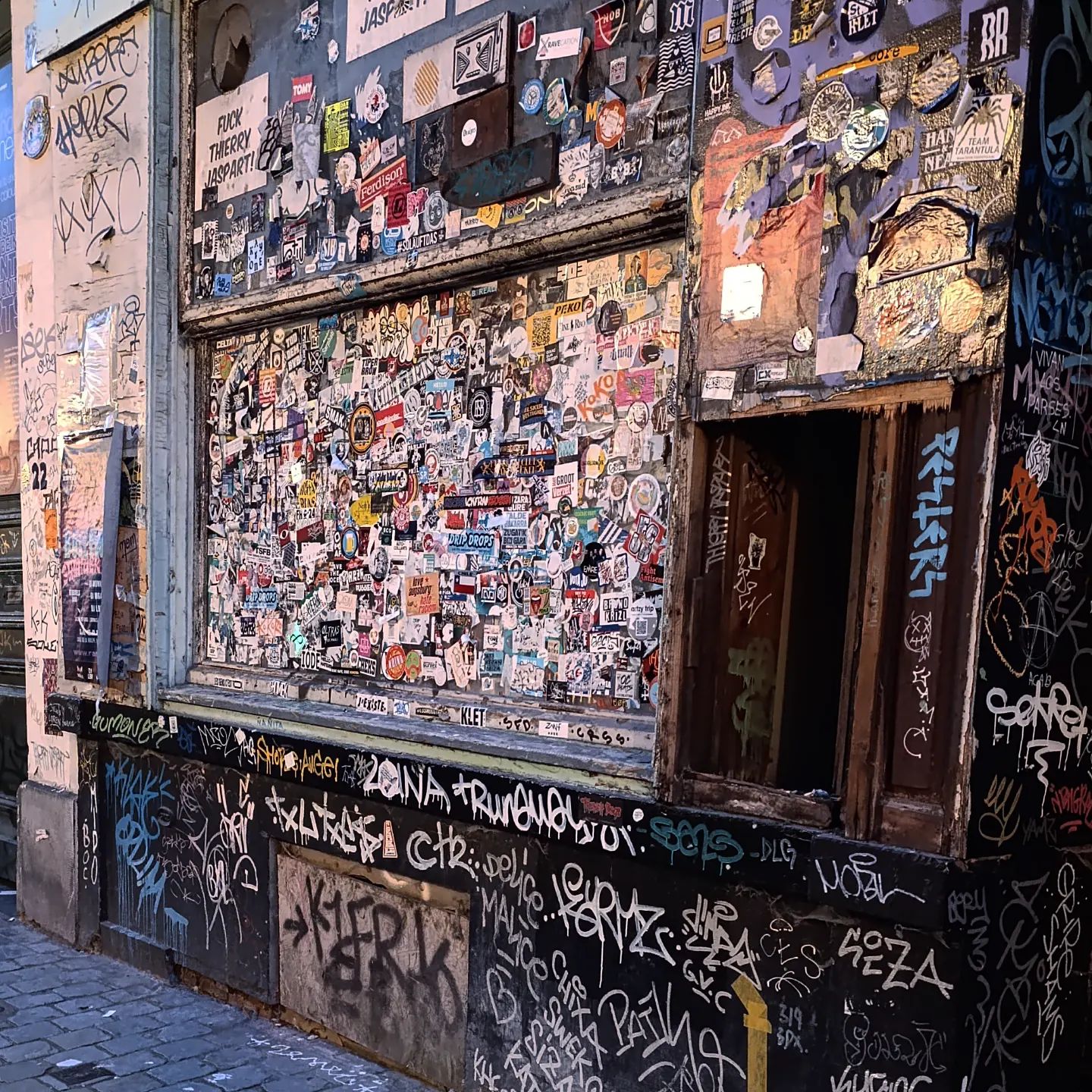
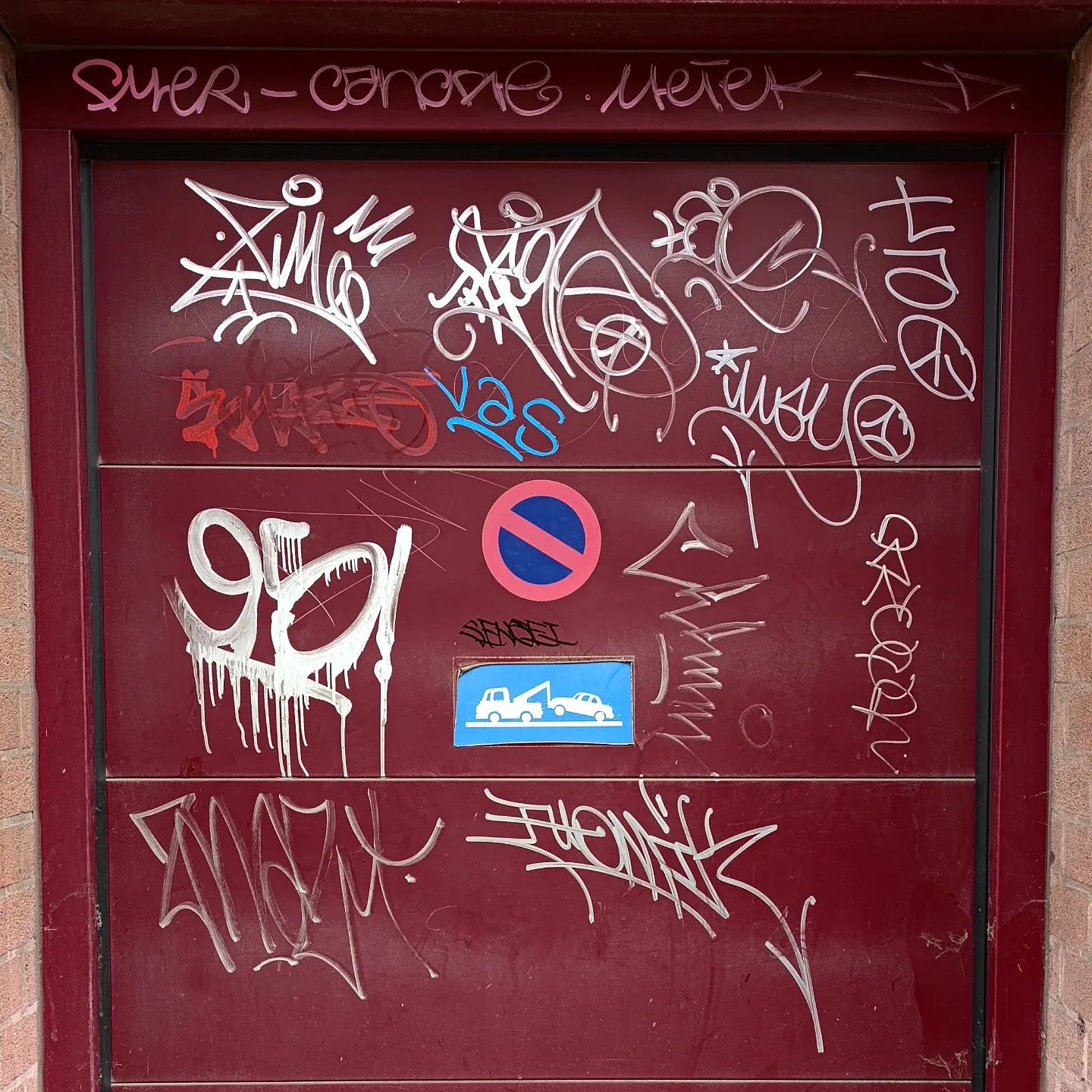
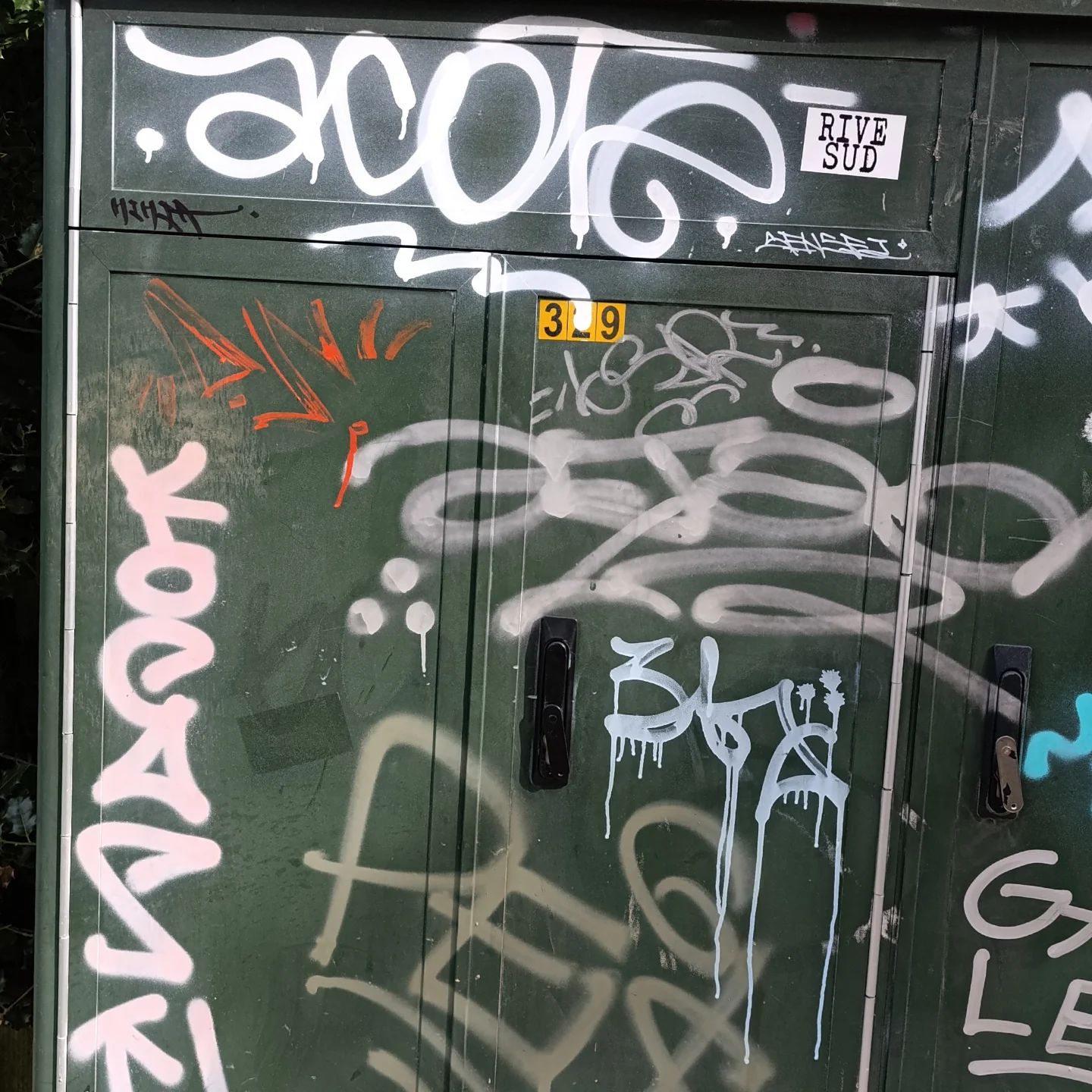





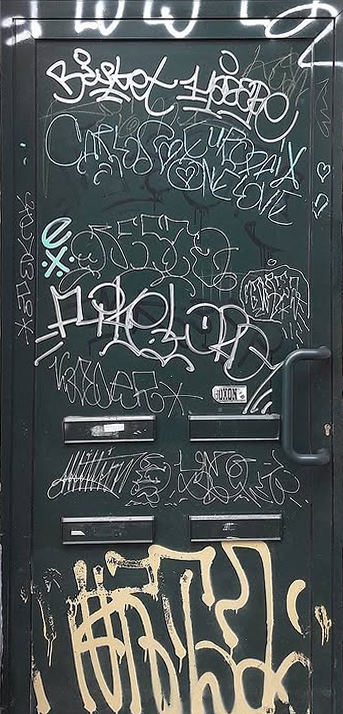
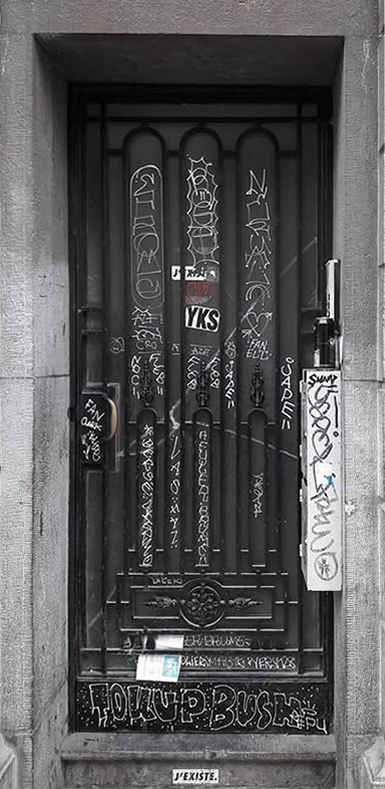
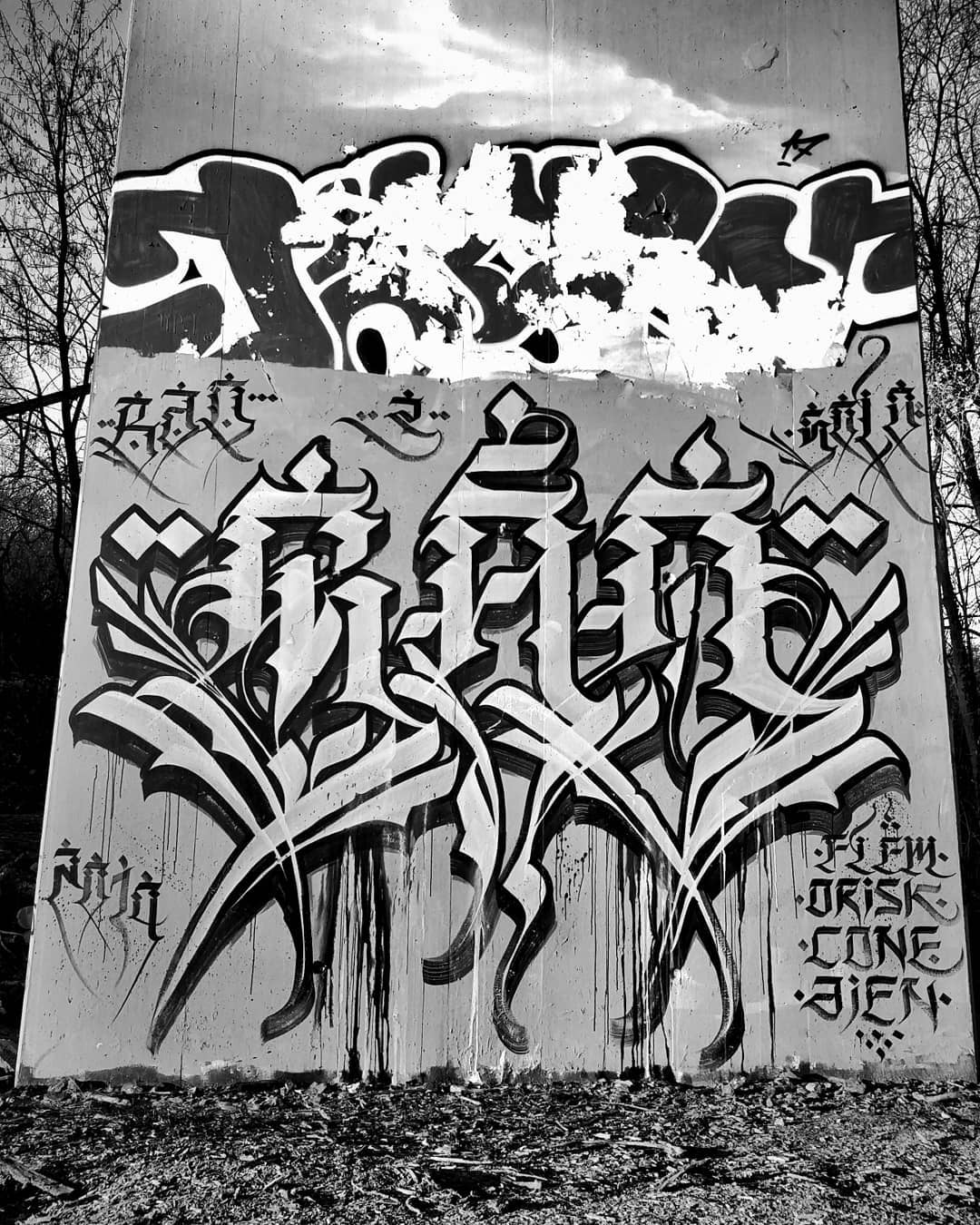
Earlier in history of art, the term " graffiti " is derived from graphein in Greek γράφειν meaning "to write". And it has origins in Italy with the form graffito or graffiato which means engraved or scratched. Wall painting is an ancestral form of art to devote a presence in a place. Difference between tags and graffitis : A tag is a smaller form of style writing usually done with a marker affixed to urban public surfaces. A graffiti is a more elaborated piece painted with different techniques such as spray cans, brushes, rolls, and has a more consequent size. Both graffiti and tags have a meaning of a manifestation of self-expression of existence in society. Painting is an art form where the gesture is as important as the result.Epehemera / transience / temporality : acts involving the time and space Dangererous places (difficult to reach), challenge Visibility Political acts keywords : street art, urban, signature, writing, styles, paint, visual messages, walls, street school, community, underground, public space
As the main interest of "The Wanderer", a journalism project for and with artists, oldschooler, curious people, travelers. All the main researches and documentations are preferably linked and provide from open access library ! The format is adapted to be printed in A5 fanzine (A4 folded) remasterized in pdf. 4 columns / / / / Documentations : main sources : Graffiti in china / pdf graffiti' denoted only written names, which meant nothing and therefore could be considered 'empty signifiers'. Writing names resulted in 'a kind of riot of signs' in a city, bearing political significance but lacking any content and meaning. Contrary to graffiti, frescoes and murals made without official commission were 'spontaneous art works' and they usually have a revolutionary message, but emphasizing aesthetic criteria in murals can reduce their political articulation What / who and where : The questions as to what is written/drawn/painted on the walls and how,are at least equally important as the more common questions of who and where. The King of Kowloon : https://fr.wikipedia.org/wiki/Tsang_Tsou-choi new socio-political circumstances emerging along with a modern nation in the twentieth century challenged traditions and -writing in public became primarily a political act officials have a tolerant attitude toward writers if they do not get too visible or if the graffiti is not too offensive (Somo, interview, 29 June 2008). For example, the 'bombing'20 of trains, which has been very popular in the Euro-American countries (see e.g., Cooper & Chalfant 1984: 69–79; Macdonald 2002: 108–109) is still rare in China. Occasionally it has been done by writers in the southern cities, but according to Soos, this is extremely rare because writers just do not want to get into so much trouble (interview, 13 June 2008). The visibil-ity referred to by Somo also applies to the amount of graffiti in public space. If Chinese writers would start to tag and bomb everything, the situation would obviously change and officials would not be so tolerant. Pieces with Chinese characters do exist in growing numbers, but they are not very common yet. The majority of graffiti, if they include any words, are written in English, because Euro-American graffiti found on the Internet is used as models. One reason for not using Chinese characters is related to the question of style. According to writers themselves, Chinese characters become easily illegible if written in a vigorous wildstyle and therefore English is still preferred (Soos, interview, 13 June 2008; Rois, interview, 1 July 2008) Street art and related terms / pdfPublic Art, Graffiti or Urban Art. Today, the term Graffiti, a relative of Street Art, is associated with a particular form of Graffiti called Style Writing, a.k.a. contemporary graffiti, underground graffiti, or subculture graffiti. Style Writing (as I call this form of Graffiti here) is name writing in the form of little (name) tags or bigger more elaborated (master)pieces et al. affixed to urban public surfaces, usually with a spray can or a marker in a qualitative and/or a quantitative way. The word “Graffiti” comes from the term “sgraffito”, which was first mentioned by Versari in 1564 (Vasari, 1945)1 who re-ferred to a technique of Sgraffito – or scratched patterns on the façades of houses in the Renaissance – related to fresco painting. Artists like the French Pochoirists around Blek le Rat in the 1980s or punk stenciling Such “Stencil-Graffiti” is seen today as both a pre-cursor and a technical sub-type of Street Art because of the popularity of stencils in both the media and among the gen-eral public, even though they represent just one method of the reproduction techniques used in Street Art. Although some Street Art today has roots in propaganda or political posters Brassaï, who, in 1933 labeled scratch-Graffiti as “l’art bâtard des rues mal famées” or “bastard art of back streets” in the streets of Paris of his time from a legal point of view – are often considered to be vandalism. As laws are different from country to country, Street Art may not be illegal everywhere, for instance in China or South America, whereas it may be considered illegal in Europe or the USA legal phenomena in his un-derstanding of Street Art – like pre-approved stickers or le-gally (commissioned) pictures on walls by Street Artists who otherwise work illegally Graffiti seeks to communicate or send a message "intentionally seeks communication with a large circle of people" Graffiti is an art form where the gesture is at least as important as the result performance Street Artists adopted the importance of time – the spectators can see in what short time they made this work without getting caught – also the transience of ephemeral Street Art and the importance of space Street Art Is Ephemeral and Participatory Street Art is often participatory. That is, anyone can paint over it, destroy it, add something to it, or complete it.but the general public, the passers-by can also become active participants with a piece of Street Art. Style Writing has strict rules about who is allowed to alter pieces of other Style Writers. Some Street Artists encourage interaction with other players on the street, while some make their work as hard to alter and destroy as possible, , for instance by using firm material like the tiles of French Street Artist Space In-vader. Most Street Art is ephemeral, i.e. temporary. Photography can serve to document the process of change over time for a piece of Street Art, a process that is encouraged by many Street Artists. __ Urban art The term Urban Art is broader than Street Art and also includes legal works. Urban Art seemed more appropriate as an umbrella term for any art in the style of Street Art, Style Writing or mural art. for majority of Public Art or art in public space, Urban Art refers stylistically to Street Art and graffiti Style WritingStreet art and heritage conservation: From values to performativity / pdf the authenticity of these art forms such as illegality, illegibility, anti-commercialism, transience/temporary the heritage values of street art must be experienced,and street art is the experience street art was once considered a rebellious statement against authorities and capitalist systems, The “Banksy Effect” and Street Art in the Middle East / pdf (2015-12-20) !!! Graffiti, Street Art and Murals in the Age of the Neoliberal City / pdf (2024-05-07) The role of graffiti as sites of contestation of the dominant ideology and hegemonic political practice in the urban landscapes visual expressions critiqued and resisting the dominant tendencies in the restructuring of public space ephemeral essence of its visual message captured in photography Contributions (add Taiwan urban street artstyle mural event) Cities as a cauldron of creativity. Mobilising, concentrating, channelling human creative energy. They turn that energy into technical and artistic innovations, new forms of commerce and new industries, and evolving paradigms of community and civilization. (article about Political message, exemple with in Slovenian article, gentrification and social field of housing) Urban art as a revolt, protest, as a voice against injustice passed over in silence and development practices. Political graffiti dealing with the social field of housing and the changing role of cities : "Housing is becoming ever less an infrastructure for living and ever more an instrument for financial accumulation." "housing for all!”, “against rents / for a decent life” make a plea for social justice in the field of housing criticizes the inequalities of urban living conditions in neoliberal capitalism they said: “we are renovating for you”. They were soon altered into “we are renovating for you, tourists and elites” Walls of Freedom:Process and Methodologies / pdf The creative economy and urban art clusters: Locational characteristics of art galleries in Seoul 2024 event : Meeting of style Taiwan Google scholar research (access uni only): urban art meeting of styles Blommaert, J. (2016). “Meeting of Styles” and the online infrastructures of graffiti. Applied Linguistics Review, 7(2), 99-115. Urban Art in Italy Instead of being randomly chosen, the site or architecture on which a mural is painted responds to specific requirements of visibility, accessibility, and dangerousness of execution. Each of these features influences the way in which the work will be received both by the community of artists and by the wider audience of the city’s inhabitants. It is precisely the geographical and tem-poral variables that give a specific and unique meaning to an urban artwork On a more general level, whereas many institutional activi-ties carried out by municipalities to use urban art to rede-velop degraded areas, are often labeled as “urban renewal”, this term could be used more appropriately since “urban re-newal” actually involves a different attitude and a different degree of commitment, including a careful financial planning to tackle the complex socio-urban dynamics at work in large areas of the city. BELGIQUE : Propaganza.be De l’art pour changer la rue ? Étude du rôle de la norme de gentrification dans la construction de projets de street art à Bruxelles et Marseille Changing the street with art? A study of the role of the gentrification norm in the making of street art projects in Brussels and Marseille Posters against the Patriarchy: Violence across the Public/Private Binary in Brussels : A Phenomenology of Feminist Street Art in Brussels / pdf France : Mouvement des "Black Lines" à Paris, Révolution française de 1789 Second world war : " Kilroy was here " Pichação / pixação : São Paulo (Brésil) Pixo is a transgressive cultural aesthetic movement that emerged in the 80s in São Paulo, Brazil. It is a movement related to similar street art movements that happened around the world at the time but it continues to this day with only internal references, breaking with the artistic cultural import from Europe and the United States. Emerging in a city as chaotic, unequal and aggressive as São Paulo, today, pixacão has expanded to practically the entire Brazilian territory, assuming its own identity in each state, being very different aesthetically from region to region, creating a rich diversity. In Brazil, thousands of people climb entire buildings from the outside, floor by floor, without safety devices, using only their bodies and the structure of the buildings to leave their mark on the city making use of different techniques developed by the movement’s members themselves. "People want good graffiti”: Tensions, contradictions, and everyday politics surrounding graffiti in Hanoi, Vietnam Graffiti in Asia, in Singapore the graffiti is tolerated, as long as the art is aesthethically pleasing and serves a positive purpose. This is an open-minded pragmatic attitude to avoid confrontation and danger about illegality in a city, by accepting street art and youth urban cultures. The state has less confrontational attitude towards the society and artists and even co-opted it for a visual marker for an "open and tolerant society". Taking into account the historical situation of Asia, political public writing, notably stte propaganda, is also prevalent in Chinese and Vietnamese cities. But most graffiti writers in China deliberately avoid creating graffiti as a political statement of trangressive act. In Vietnam some local artists explained that they are trying to leep their graffiti as inoffensive as possible ; "we're already painting illegally somewhere, so we don't touch politics" (Zeph, local). (...) Foreign writers explaned that the criteria for what "cross the line" in Vietnam depended of how the act was perceived. (...) when he painted he tried to "make a kinf of gift for the space and for people". Eneri is one of the movements most active feminine voices. Interview of Eneri by Veneno Une des particularités des pichadores est la construction d’échelles humaines. J’ai remarqué que tu utilisais cette technique pour taguer encore plus haut. Que peux-tu nous dire à ce sujet ? C’est beau à voir je trouve. Avec une ou plusieurs personnes qui s’entraident en formant ces échelles humaines, nous arrivons à atteindre des endroits qui seraient inatteignables tout seuls. Doreen Lee : https://scholar.google.com/citations?user=9pwFwXgAAAAJ&hl=en SKAR interview :https://www.bombingscience.com/skar/?fbclid=PAY2xjawG_9mRleHRuA2FlbQIxMQABppjCHAmwmsJ0T-xQiS7BwLVOd0PGl7foXANN6TF4sTSBK92VIiPH8F2mFg_aem_mphp-_NPQB12cL_jO5xtiQ tags, tags, tags forum of Bombing science for the Wanderer's home page : screenshot of the final project (not iframe) and linked to the article (this article lol) !!! Pressionisme : https://fr.wikipedia.org/wiki/Pressionnisme Problem oriented Policy : " PoP " Interview template : Can we have a presentation of you ? / Present yourself. Where are you from ? What are you origins ? What are your main motivations, inspirations in your artistical development ? How did you start doing it ? Do you have hobbies, things you particuliarly like ? What are your life goals, values you want to reach ? The best advice for the generations to come :